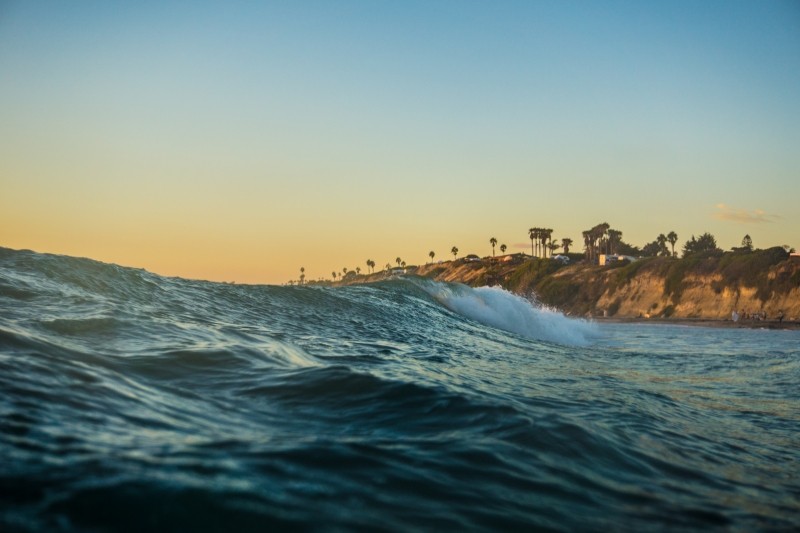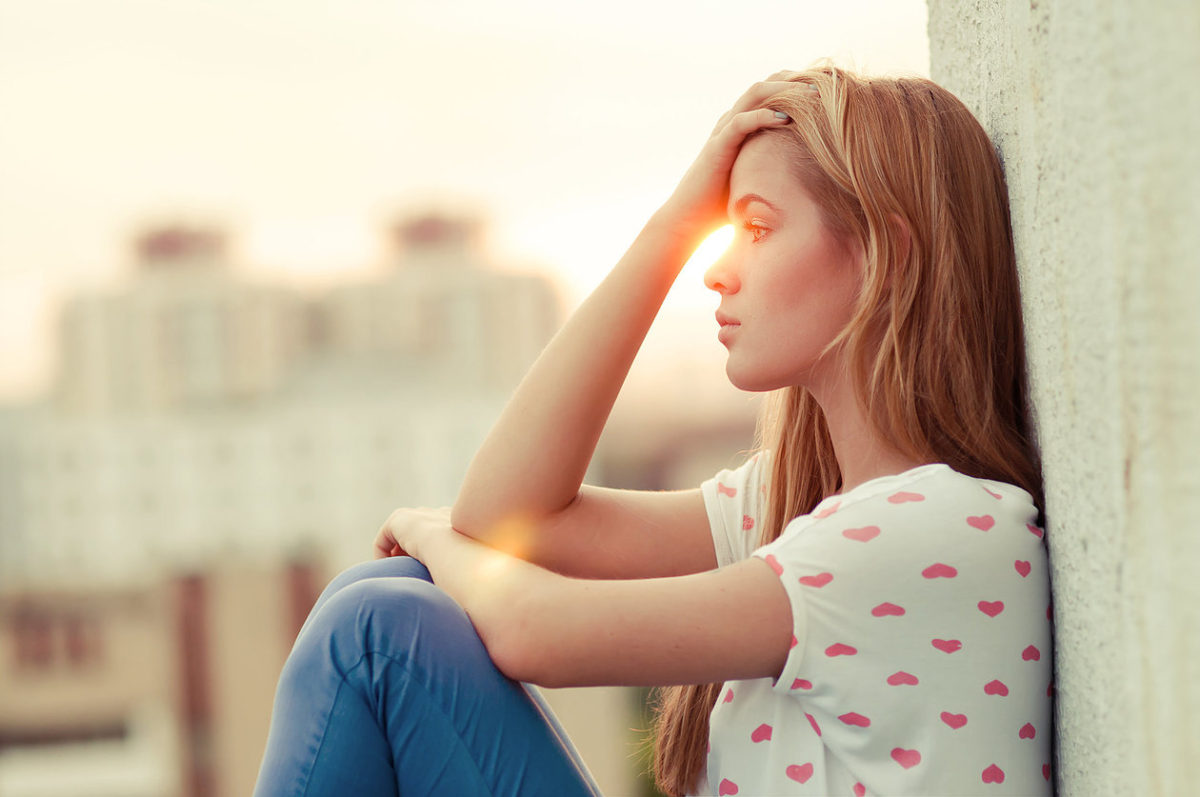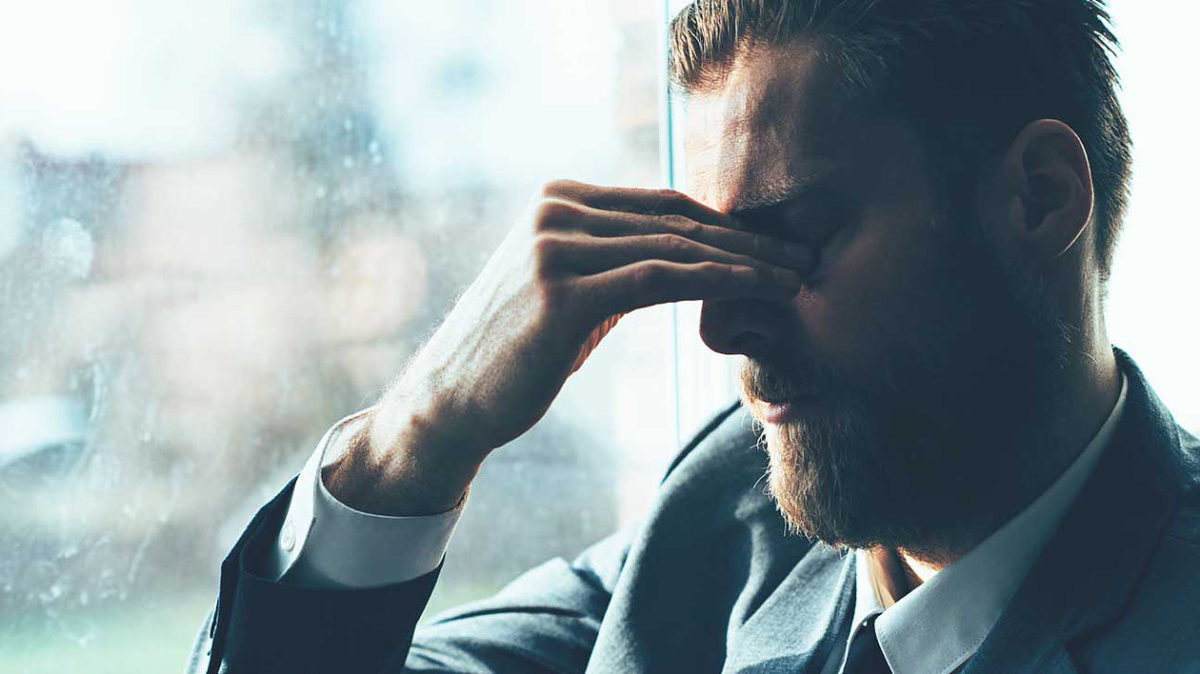Have you ever felt tension in your chest when you feel stressed? Or those short-lived moments of intense panic and fear? Maybe breathing or concentrating seems impossible? Many of us can likely relate to these questions and we call this experience anxiety. Some might think that only a select few of us have to deal with anxiety when in fact it is something all of us experience, to some degree, at some point in our lives. Anxiety is an emotion characterized by feelings of tension and worried thoughts. It is accompanied by physical symptoms such as sweating, trembling, or increased heart rate [1]. Popular convention suggests that anxiety is just a mental disorder when it is actually part of the body’s natural response to anticipation of future threats. In fact, some arousal (anxiety) is actually helpful for increasing productivity levels. The Yerkes-Dodson Law suggests that there is an empirical relationship between stress and performance. Moderate levels of stress can help you concentrate and focus on a given task. However, extreme levels of anxiety can interrupt your concentration and interfere with your performance. Anxiety culminates into anxiety disorder when feelings of tension and worry become too excessive and hard to control, causes significant distress or impairment, and occurs more often than not for at least six months [2]. The chart below shows that performance level is strong when stress is moderate and hindered when stress is too low or too high. It’s important to understand anxiety affects each person differently and symptoms can vary. Anxiety disorders are the most common mental disorder and affects approximately 30% of adults at some point in their lives [3]. The type of anxiety disorder can vary and range from generalized anxiety disorder to more specific phobias and panic disorder. Potential causes and symptoms of anxiety disorders include:
A key component of anxiety is your body’s physical response; your heart rate and breathing speeds up and you perspire and feel tense. A state of relaxation is an important step in comprehensive treatment as it will help slow down or manage physical effects. It’s harder to feel anxious if you are already in a calm, relaxed state and it’s easier to calm yourself by practicing regular relaxation techniques. The elements that characterize a state of relaxation include:
The following 6 coping strategies can help slow down your heart rate and breathing pattern to manage your anxiety.
One way you can reach a state of relaxation is by learning how to personally manage your symptoms and cope with the anxiety. Paradoxically, learning to accept your anxiety is an easy way to help you overcome it. Dr. Aaron Beck and colleagues developed a cognitive therapy tool for managing anxiety known as the AWARE method. A W A R E
Meditation exercises produce deep physiological relaxation and feelings of peace and tranquility [5]. It involves an active process of focusing your attention on your breathing to the point where you abandon the constant loop of stress provoking thoughts. For example, think of a time when you were totally absorbed in a sensory experience such as listening to a beautiful piece of music or receiving a massage. You weren’t trying to analyze or manipulate the experience, you were just living it. This is similar to how your psychological posture should be during meditation. credit: https://redd.it/1xsu1a
Visualization practice combines a 4-4-8 breathing pattern with meditation practice. To do so: Use your mind’s eye create a picture of a pleasant scene (your happy place). For example, imagine you are walking on the beach. A cool fresh breeze blowing across your face and through your hair. As you are listening to the sounds of waves, you hear the birds singing across the beach. Just imagine some experience that you personally find relaxing. Focus on the details of the experience (sights, sounds, smells, feelings, etc.) and continue to breathe evenly and deeply. Open your eyes once you’ve reach a calm and relaxed state.
Another technique you can try is the Progressive Muscle Relaxation (PMR) relaxation method that involves tensing muscle groups and releasing them. Contrasting muscle tension with release can be very effective in managing the symptoms of stress, anxiety, and moments of panic/intense anxiety [4]. Begin in sequence and work progressively throughout all major muscle groups, tensing and relaxing them one at a time. It is helpful to practice this technique several times (when not anxious) so you can more easily cue yourself to the relaxed state. TO BEGIN: Sit with your back fairly straight or lie down on a comfortable surface. Try keeping your eyes closed and take a deep breathing in through your nose. Feel free to listen to relaxing music, if desired. As you breathe deeply, focus your attention on your feet. Toes – Curl your toes as tightly as you can and hold for five seconds. Relax. Calves – Flex feet to tighten calves and hold for five seconds. Relax. Thighs – Tighten your thigh muscles by pressing your knees together as tightly as you can for five seconds. Hips and buttocks – Flex your hip and buttock muscles for five seconds. Relax. Stomach – Focus on your belly button, take a deep breath in, release that breath, and tighten stomach muscles. Shoulders – Move your shoulders forward, squeeze chest muscles and hold for five seconds. Relax. Hands – Extend your arms in front of you. Clench your fists tightly for five seconds. Relax. Feel the warmth and calmness in your hands as you release. Upper arms – Bend your elbows. Tense your biceps for five seconds. Relax. Feel the tension leave your arms. Back – Squeeze shoulder blades together and hold for five seconds. Relax. Feel the anxiety and tension leave your body as you relax. Forehead – Wrinkle your forehead; try to make your eyebrows touch your hairline for five seconds. Relax. Eyes and nose – Close your eyes as tightly as you can for five seconds. Relax. Lips, cheeks, and jaw – Tighten your lips, cheeks, and jaw and hold for five seconds. Relax. Feel the warmth and calmness in your face. Focus on any muscles that may still feel tense. Breathe in for three seconds, hold for three seconds, and release for five seconds – releasing any remaining tension. Once you begin to feel relaxed, focus your attention on feeling warm or as if you were on a sunny beach. Let the light and warmth travel throughout your relaxed body. Feel the waves come in and out with your breathing. Stay in this moment. TO END: Slowly become aware and active. Become aware of your feet pressing on the floor, feel your body on the chair. Take five deep breaths with each breath becoming more alert. Wiggle your fingers and your toes [4].
Once you’ve learned to relax your muscle groups using the progressive muscle technique you can begin autogenic relaxation. This method teaches your body to respond to verbal commands so that you can achieve relaxation and reduce anxiety. Once you assume a comfortable position, close your eyes and slowly recite these instructions:
You can also manage your anxiety with this intentional breathing technique. Most people aren’t aware that deep breathing actually makes use of the body’s built-in natural relaxation response, which occurs when we exhale. You can use a deep diaphragmatic breathing technique to reduce your anxiety with deep breathes. This method uses a 3-3-5 breathing pattern: Make sure to breathe slowly and evenly with your mouth closed. Take notice of what you’re feeling throughout your body while exhaling; your muscles might feel warm and begin to feel light or heavy. Try and let yourself enjoy whatever sensations you’re experiencing. Repeat the diaphragmatic breathing exercise until you feel relaxed.
While these techniques are useful for managing symptoms of anxiety, there are proven treatment options that help fight against anxiety disorders such as Psychotherapy attempts to help a patient identify triggers of his/her anxiety and learn cognitive behaviors to help deal with the issues. Pharmacotherapy and diet/exercise management can improve serotonin levels in the brain and stabilize mood – an effective option for treating anxiety symptoms [6]. TMS is a non-invasive, outpatient treatment option that uses a pulsed magnetic field to stimulate function in specific regions of the brain and help treat anxiety. Researchers investigated how effective TMS is as a treatment option for generalized anxiety disorder and the results suggest 84.6% of patients’ anxiety symptoms were in remission [7]. IOPs are useful for providing cognitive behavioral therapy (CBT), Dialectical Behavioral Therapy(DBT), crisis stabilization, and motivational and supportive therapy. IOPs show to be effective through continual support from the group and clinical team as they provide a steady increase in motivation, self-esteem, safety and security, and decrease unwanted behaviors associated with anxiety such as anxiousness and irritability [8]. All of us experience anxiety, and while oftentimes you can manage it, you shouldn’t wait until your symptoms reach a critical stage before seeking professional help. If you think you might be suffering from anxiety and personal strategies aren’t working to manage it, consider consulting a mental health professional. Effective treatment options vary from person to person, so start by talking to a psychiatrist or therapist and learn what works best for you.
[1] Anxiety. (n.d.). Retrieved from American Psychological Association website: http://www.apa.org/topics/anxiety/ [2] Baldwin, D., MA, DM FRCPsych. (2017, May). Generalized anxiety disorder in adults: Epidemiology, pathogenesis, clinical manifestations, course, assessment, and diagnosis (M. B. Stein, MD, MPH & R. Hermann, MD, Eds.). Retrieved from https://www.uptodate.com/contents/generalized-anxiety-disorder-in-adults-epidemiology-pathogenesis-clinical-manifestations-course-assessment-and-diagnosis/print?source=search_result&search=gad&selectedTitle=1~55 [3] Parekh, R., M.D., M.P.H. (Ed.). (2107, January). What are anxiety disorders? Retrieved from https://www.psychiatry.org/patients-families/anxiety-disorders/what-are-anxiety-disorders [4] Christenen, K., MA, (n.d.). A Guide to Progressive Muscle Relaxation. Retrieved from https://urbanbalance.com/guide-progressive-muscle-relaxation/ [5] Wallace, K. (1970). Physiological Effects of Transcendental Meditation. American Association for the Advancement of Science, 167(3926), 1751-1754. http://science.sciencemag.org/content/167/3926/1751 [6] Young, S. N. (2007). How to increase serotonin in the human brain without drugs. Journal of Psychiatry & Neuroscience : JPN, 32(6), 394–399. [7] White, D., & Tavakoli, S. (2015). Repetitive transcranial magnetic stimulation for treatment of major depressive disorder with comorbid generalized anxiety disorder. Annals of Clinical Psychiatry: Official Journal of American Academy of Clinical Psychiatrists, 27(3), 192-206. Retrieved from https://www.ncbi.nlm.nih.gov/pubmed/26247218 [8] Davila, M., MD (Ed.).(n.d.) Adult Mental Health IOP. Retrieved from https://awakeningskc.com/intensive-outpatient-programs/

Possible Causes
Symptoms
Coping strategies for Anxiety
Elements of Relaxation

AWARE Method
Meditation


Visualization

Progressive Muscle Relaxation
Autogenic Relaxation
Diaphragmatic Breathing
Professional Treatment for Anxiety Disorder
References
Blog
Opioid dependency has become one of our nation’s largest and most problematic epidemics. In 2012, more than 250 million prescriptions were written for opioids in the United States, which is enough for every adult to have their own bottle of pills
[1]. Opioids are drugs that interact with the opioid receptors on nerve cells in the brain. Once attached, the drug reduces pain and produces a euphoric sensation throughout the body, commonly referred to as a “high”. Common opioids are oxycodone, hydrocodone, heroin, codeine, morphine, and other illegal and legally prescribed painkillers. Most victims of opioid dependency are average day Americans with chronic pain and become dependent on prescription painkillers. In fact, 4 out 5 new heroin users started out misusing their prescription pain medications [2].
Scope of the Opioid Epidemic
- Every day, approximately 90 Americans overdose and die from opioid abuse [3]
- The number of opioid-related deaths has nearly tripled since 2002 [4]
- In 2015 alone, opioid overdose killed more Americans than car crashes, gun deaths, and gun homicides respectively [5]
- Americans consume more opioids than any other country in the world, beating the second largest consuming country by over 61% [5]


Source: United Nations International Narcotics Control Board
When Does Opioid Use Become a Problem
When regulated properly, opioid use is an effective way to treat acute pain that arises from surgery or injury. Endorphins are natural painkillers the body produces, but sometimes the endorphins alone aren’t enough to subdue pain. Opioids act as synthetic endorphins when they attach to the opioid receptor. While this treatment option is fine as a short term solution, misuse can lead to unintended consequences such as dependency and tolerance( the need for higher doses). As the opioid use continues, the body stops producing these natural endorphins because the synthetic endorphins produced by the opioids tricks the body into thinking the natural endorphin levels are normal. The mind and body experience withdrawals when a person using opioids regularly tries to stop consuming opioids suddenly. The lack of endorphins causes the following withdrawal symptoms:
- Mental cravings
- Shakes
- Anxiety
- Depression
- Sweating
- Insomnia
- Flu like symptoms
Along with dependency and withdrawal issues, opioid abuse overdose can lead to fatal consequences. Some common signs/symptoms of opiate overdose are pinpoint pupils, unconsciousness, and respiratory depression. Respiratory depression is a major concern associated with opioid use. The medulla oblongata is a part of the brain that is responsible for breathing and opioids interrupt that function. When a person overdoses from opioids the respiratory receptors are blocked and breathing stops, resulting in death.
Combining opiates with other sedating substances can increase a person’s risk of respiratory depression and death. The use of opiates with alcohol, even a small amount, benzodiazepines such as: alprazolam (Xanax), lorazepam (Ativan), clonazepam (Klonpin), temazepam (Resotril), diazepam (Valium) to name a few, and/or muscle relaxers can increase a person’s chance of overdose, respiratory depression and death.
How It’s Treated
There are proven treatment options that help fight opioid dependency such as psychotherapy, IOPs, naltrexone, buprenorphine, etc. Naltrexone and buprenorphine act as opioid antagonists which effectively substitutes for a full agonist opioid (such as those listed above) and stabilizes a person’s brain chemistry. The antagonist stops the development of further opioid tolerance by blocking the receptors in the brain and prevents the ability to feel high. The antagonists are useful in preventing relapse and help fight opioid dependency altogether. Naltrexone and buprenorphine have other favorable pharmacologic properties and are well-tolerated by most. They are part of a harm reduction strategy and are extremely helpful adjunct to comprehensive treatment of opioid dependency.
You can overcome your opioid dependency by taking the first step and seeking help. Effective treatment options vary from person to person, so start by talking to a psychiatrist or therapist and learn what works best for you.
What To Do If Someone Is Overdosing
Some common signs/symptoms of opiate overdose are pinpoint pupils, unconsciousness, and respiratory depression. What can you do if you, a friend, or loved one is experiencing an overdose? Act Fast. Call 911 and administer the antidote for opiates called naloxone (Narcan). It is similar to an EpiPen and can save a life. Do not hesitate to call 911 for help because you are worried about getting in trouble. You could end up saving someone’s life.
A recent survey in the US found that the distribution of approximately 50000 naloxone kits through local opioid overdose prevention programs had resulted in more than 10000 uses to reverse overdoses[6].
- 7 Centers for Disease Control and Prevention. (2014). Opioid Painkiller Prescribing, Where You Live Makes a Difference. Atlanta, GA: Centers for Disease Control and Prevention. Available at http://www.cdc.gov/vitalsigns/opioid-prescribing/.
- Jones CM. Heroin use and heroin use risk behaviors among nonmedical users of prescription opioid pain relievers – United States, 2002-2004 and 2008-2010. Drug Alcohol Depend. 2013 Sep 1;132(1-2):95-100. doi: 10.1016/j.drugalcdep.2013.01.007. Epub 2013 Feb 12
- Rudd RA, Seth P, David F, Scholl L. Increases in Drug and Opioid-Involved Overdose Deaths — United States, 2010–2015. MMWR Morb Mortal Wkly Rep. 2016;65. doi:10.15585/mmwr.mm655051e1.
- Overdose Death Rates. (2017, January). Retrieved from National Institute on Drug Abuse website: https://www.drugabuse.gov/related-topics/trends-statistics/overdose-death-rates
- Lopez, G., & Fronsten, S. (2017, March 29). How the opioid epidemic became America’s worst drug crisis ever, in 15 maps and charts [Blog post]. Retrieved from Vox website: https://www.vox.com/science-and-health/2017/3/23/14987892/opioid-heroin-epidemic-charts
- Information sheet on opioid overdose. (n.d.). Retrieved June 01, 2017, from http://www.who.int/substance_abuse/information-sheet/en/
Transcranial Magnetic Stimulation (TMS) is a treatment for Major Depressive Disorder (commonly known as depression) that is gaining recognition for its success rate. We provide free consultations to see if TMS is right for you. In our office, we have had over 200 patients go through the TMS treatment since 2013. Of those who did it, 66% achieved full remission from depression and 90% had a positive response to the TMS treatment. Here are 6 facts on how TMS can treat your depression.
Works Cited
- Ranna Parekh, M. M. (2017, January). What is Depression? Retrieved from psychiatry.org: https://www.psychiatry.org/patients-families/depression/what-is-depression
- Ph.D., E. S. (2014, August 7). Are Antidepressants Effective? Retrieved from psychologytoday.com: https://www.psychologytoday.com/blog/how-everyone-became-depressed/201408/are-antidepressants-effective
- What causes depression? (2017, April 11). Retrieved from Health.harvard.edu: http://www.health.harvard.edu/mind-and-mood/what-causes-depression
- Staff, M. C. (2015, December 03). mayoclinic.com. Retrieved from Transcranial Magnetic Stimulation: http://www.mayoclinic.org/tests-procedures/transcranial-magnetic-stimulation/details/risks/cmc-20163840
Mental health awareness grows every day, especially when celebrities speak out publicly. Last week, Lady Gaga and Prince William shared a conversation about mental health on YouTube. Lady Gaga shares her personal story about mental health personally affecting her life. In her open letter, Gaga describes the struggle of living with Post Traumatic Stress Disorder (PTSD).
She expressed feeling ashamed to open-up about struggling with mental health because she is wildly successful, has the love of her friends and family, and lives a life of luxury. It seemed as if she should have no excuse to complain about her life when other people struggle to find a place to sleep or their next meal.
As Prince William stated, Lady Gaga’s open letter is a good example of the attitude we need take towards mental health. No one should keep the pain to themselves and feel alone.
Everyone deals with mental health, as they do with physical health. When we break our bones, we seek treatment as fast as we can. We know that masking the pain with drugs works temporarily, but it doesn’t do anything to fix the problem at hand. The longer we go without treating that broken bone, the worse the break is going to be. Then everyday tasks that were not given a second thought eventually become a struggle to complete. At a certain point, the pain is so agonizing that we begin to lose motivation to do any of those everyday things like get out of bed.
The same goes for mental health; the longer we wait to open up to someone, the harder it becomes. No one, not even the rich and famous, is immune to the issues that challenge our well-being such as depression, anxiety, stress, etc. Do not be afraid to share with friends and family how you actually feel and seek the treatment you may need. Sometimes, the best medicine in the world is words of encouragement that help people who feel ashamed of an invisible illness to overcome their shame and feel free.
References
[Lady Gaga]. (2017, April 17). Lady Gaga + Prince William | Heads Together | #oktosay [Video File]. Retrieved from https://youtu.be/73WmwtJM-50
Lady Gaga (2016, Dec 6). “Head Stuck in a Cycle I Look Off and I Stare” A personal letter from Gaga. Retrieved from
https://bornthisway.foundation/personal-letter-gaga/
With her memoir set for publication on Tuesday, retired U.S. women’s soccer star Abby Wambach is opening up about her years of substance abuse. In an interview with the Associated Press, she said her arrest on a DUI charge in April served as a wake-up call.
“I was stubborn and I was in denial,” she said. “I didn’t want to face the truth.”
Wambach was charged with DUI after police in Portland, Ore., pulled her over for running a red light in the early morning of April 3. According to the arrest records, she admitted to using marijuana and cocaine in the past. Wambach eventually pleaded guilty, entering a diversion program for first-time offenders, and posted a message on Facebook immediately following her arrest in which she took full responsibility for her actions.
Noninvasive brain stimulation is a promising therapy for a wide range of psychiatric and neurological issues, but it’s attracted the attention of a group that has some researchers worried: people who are willing to self-administer brain stimulation to boost brain function.
“As clinicians and scientists who study noninvasive brain stimulation, we share a common interest with DIY [do-it-yourself] users … to improve brain function,” wrote Michael Fox, M.D., Ph.D., associate director of the Berenson-Allen Center for Noninvasive Brain Stimulation at Beth Israel Deaconess Medical Center in Boston and colleagues in a recent open letter in the Annals of Neurology. “However … there is much about noninvasive brain stimulation in general, and tDCS [transcranial direct current stimulation] in particular, that remains unknown.”
A survey of laws and policies of 193 United Nations (UN) member states reveals a significant level of discrimination against individuals with mental illness in the areas of marriage, voting rights, and employment, among others.
Key findings of the survey, funded by the World Psychiatric Association (WPA) and released September 5 on World Mind Matters Day, include the following:
We often wonder if there are things that we are doing in our daily routine that actually increase our feelings of depression and anxiety. We also wonder if there are simple changes that we can make in our lives to decrease these feelings and provide us some relief. There are indeed things that we don’t think twice about during our day that add to our feelings of depression and anxiety, as well as unassuming changes that we can make in our lives, without much effort, to help reduce these feelings. We will discuss both below. We will talk over the things that increase depressive and anxious feelings while discussing what we can do about them. The changes will likely be far simpler than you have ever thought.
The lifetime prevalence of major depressive disorder (MDD) is nearly 20%, and up to half of individuals diagnosed with the disorder do not respond to first-line treatment.1 A case of MDD is considered treatment-resistant once the patient has been taking an antidepressant for at least 6 weeks with no improvement in symptoms.
New findings suggest that most Americans with depression receive no treatment, while raising the possibility that overtreatment of depression is also widespread. Less than a third of American adults who screened positive for depression received treatment for their symptoms, whereas over two-thirds of adults receiving treatment for depression did not report symptoms of depression or serious psychological distress, according to a study from Columbia University Medical Center (CUMC) and the University of Pennsylvania.











